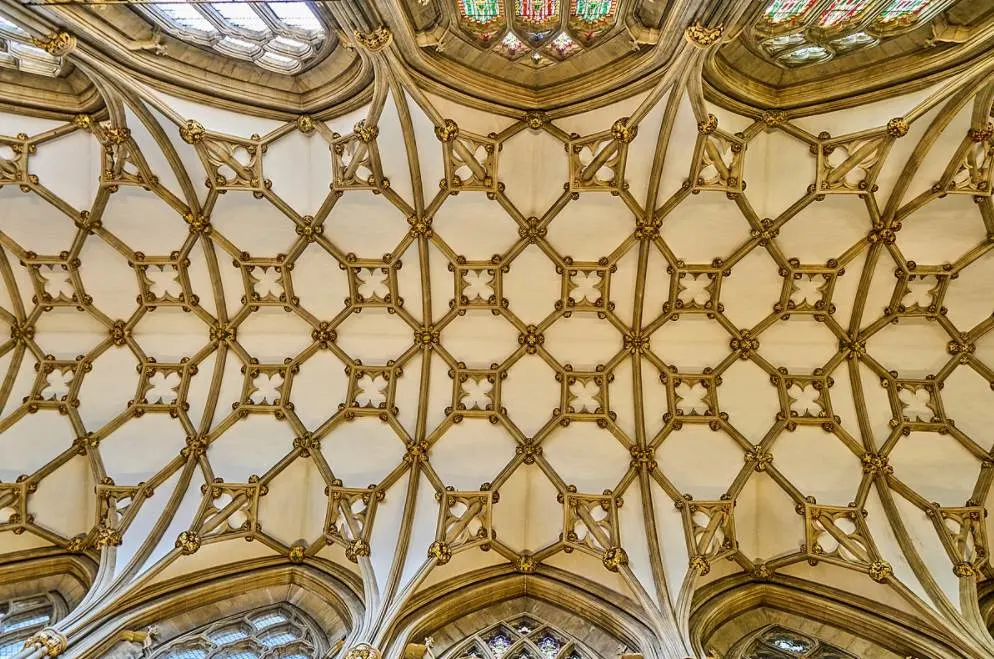One of the greatest examples of Gothic architecture in England can be found in the smallest city in the country (excluding the City of London).
In this article, you’ll discover some of the most interesting facts about Wells Cathedral, an incredible Gothic cathedral with a few interesting stories to tell.
1. It’s located in a small city in the countryside of Somerset
Wells Cathedral is located in a city with the same name in the Mendip district of Somerset, a county in South West England. As the name of this city implies, it was called as such because of 3 wells located within the vicinity of the cathedral.
Just like these wells, The Anglican cathedral in the city was dedicated to Saint Andrew, the brother of Saint Peter according to the New Testament and one of the Apostles of Jesus. It’s the mother church of the Diocese of Bath and Wells.
The city is located in a relatively hilly area on the southern edge of a range of limestone hills known as the Mendip Hills. Wells is the smallest city in England based on area size when we exclude the City of London, the historical heart of London.
With a population of just over 10,000 inhabitants, it’s one of the least populous cities in England as well.
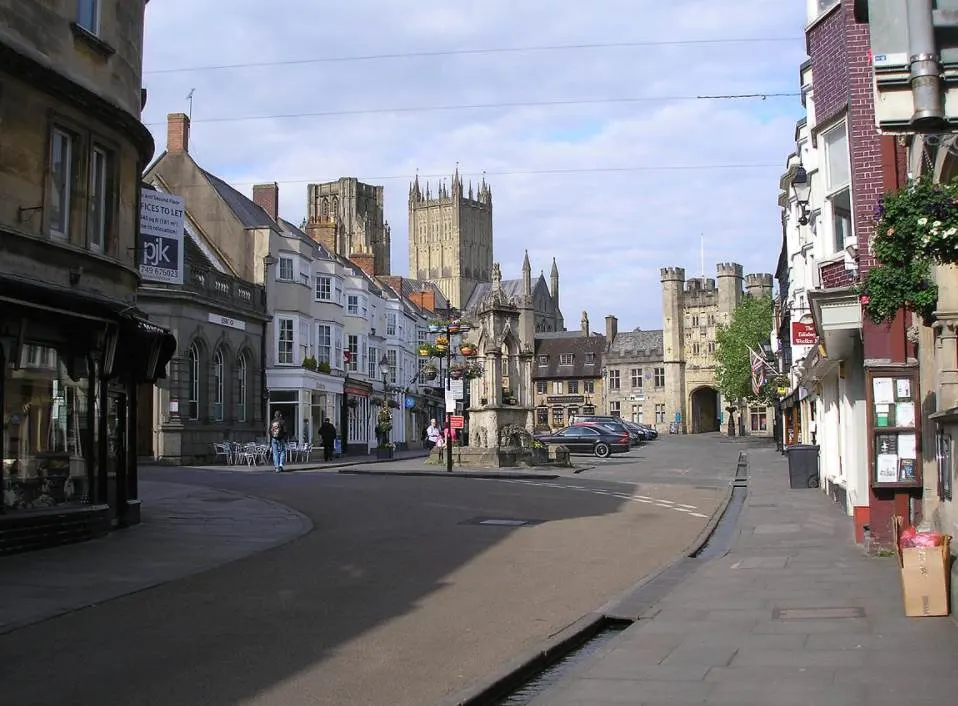
2. The cathedral was built on the site of an ancient Roman mausoleum
The history of important structures on the location of where the cathedral was built dates back to at least the late-Roman era. Excavations conducted in the area uncovered a Roman mausoleum that once stood here.
The first abbey church on the site was built in the early 8th century by Aldhelm, a local bishop who lived during the reign of King Ine of Wessex (670-726). It was during this period that the structure was dedicated to Saint Andrew.
Wells only became a See when it was moved here from Sherborne. Because of its status and important structure, the small settlement of Wells was able to attain city status.
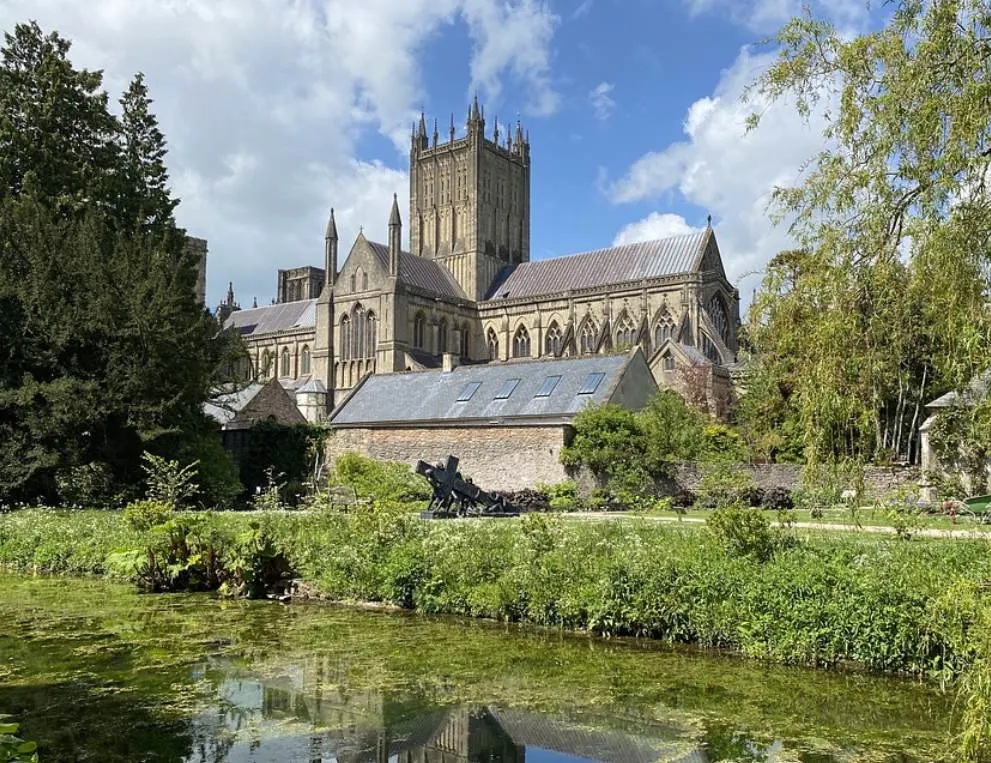
3. The west front and central tower are its most prominent features

The first construction phase of Wells Cathedral was initiated by the local Bishop, a man named Reginald Fitz Jocelin, in the year 1175. It ended around 1230.
During this period, the Romanesque architectural style was completely abandoned and the round shapes of this particular style were replaced by pointy windows and spires. Because it features no Romanesque elements at all, it’s often considered to be the first truly Gothic building in Europe.
Although the cathedral was officially consecrated in 1239, it was far from completed in the condition we can admire today. Master mason William Wynford, an expert of the perpendicular Gothic style who also worked at Windsor Castle, wasn’t hired until 1365.
He completed the west from, one of the most magnificent façades of a cathedral you’ll ever come across. The central tower of the building is the other prominent feature of this remarkable Gothic structure.
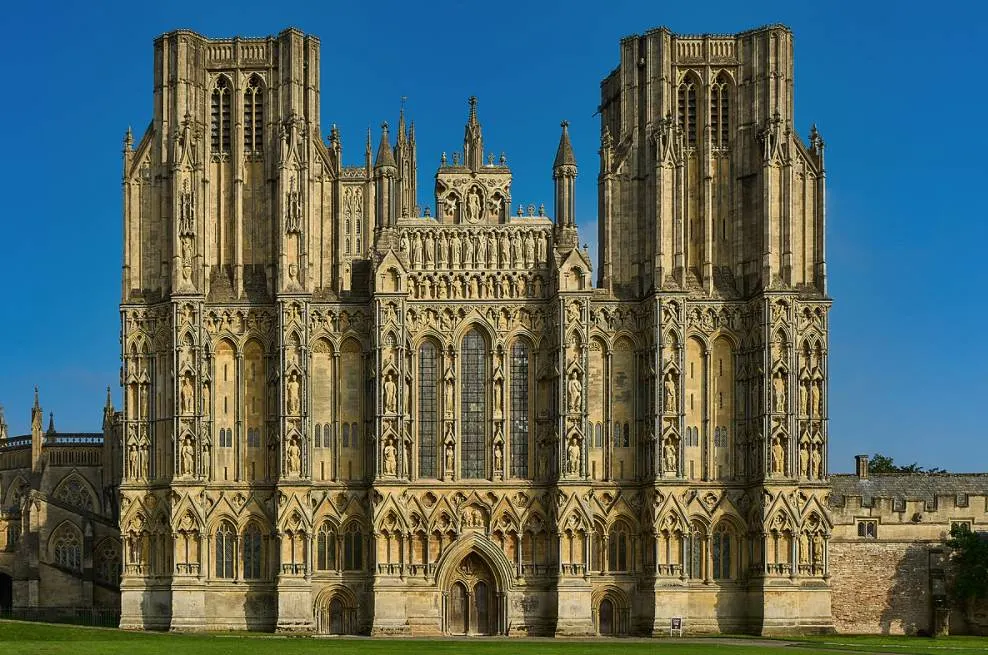
4. The large cathedral took nearly 3 centuries to complete
The construction of the cathedral had started in the year 1175 and wasn’t completed until halfway through the 15th century. About 3 centuries after the first stone was laid, Wells Cathedral appeared very much the same way as it does today.
It’s not the largest church in England but still decently sized. This is especially true because it’s located in such a small city. The cathedral has the following dimensions:
- Length: 126.5 meters (415 feet)
- Width: 20 meters (66 feet)
- Maximum width (across transepts): 47 meters (154 feet)
- Nave height: 20.5 meters (67 feet)
- Central tower height: 55 meters (180 feet)
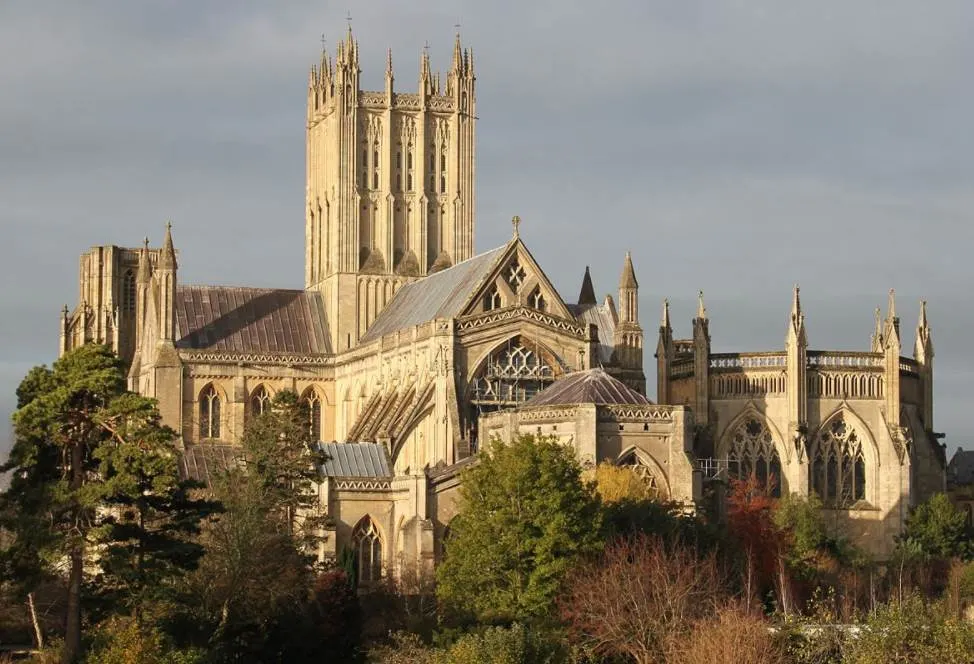
5. Multiple historic buildings adjoin the cathedral in Wells
The remarkable Gothic architecture of the cathedral and its extended history have resulted in the structure being designated as a Grade I listed building by Historic England.
One of the most remarkable facts about Wells Cathedral is that several adjoining buildings can be described as being part of the overall cathedral complex.
These include the Bishop’s Palace and adjoining Bishop’s House, buildings that were constructed during the 13th century, and Vicars’ Close, a 14th-century residential street that is considered to be the oldest of its kind in Europe.
Vicars’ Close has a length of approximately 140 meters (460 feet), and most of the 14th and 15th-century buildings are the original ones, quite amazing indeed!
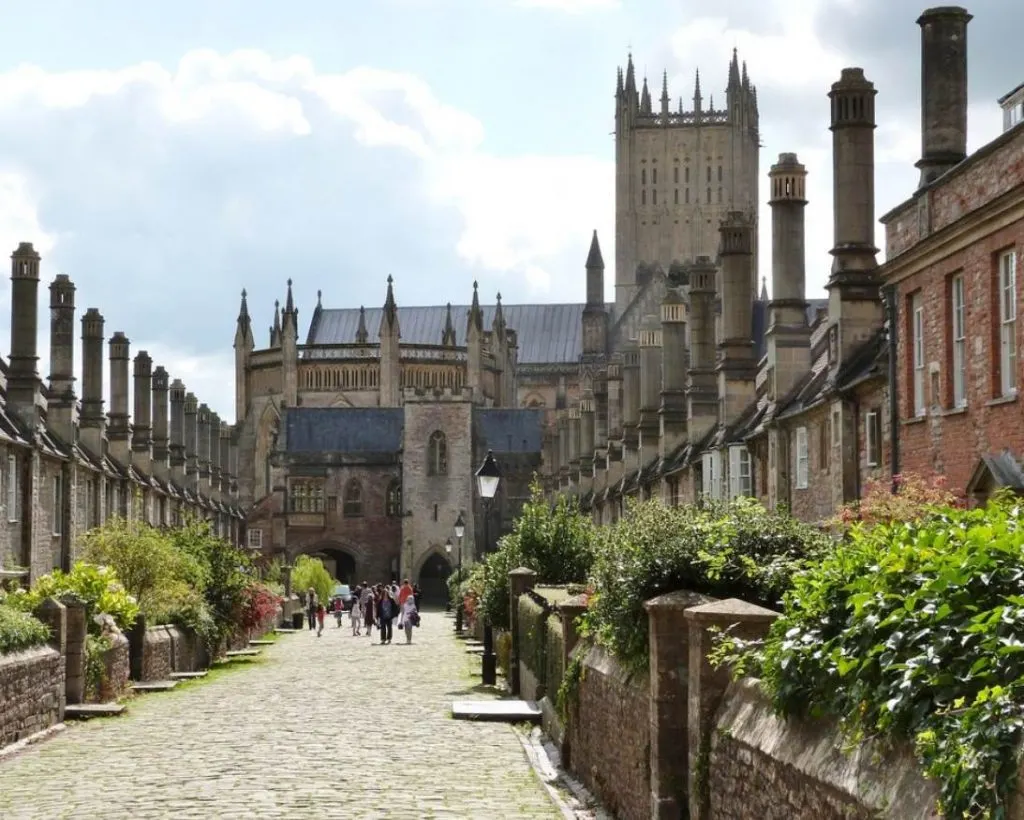
More interesting facts about Wells Cathedral
6. It’s hard to deny the fact that the west front of Wells Cathedral is its most magnificent feature. Although it was completed in the 13th century, the 300 sculptures that decorate it were only completed in the 14th century.
The west front is extremely broad and wider than the transepts as its two towers surpass it. unfortunately, many statues that decorate it were damaged during the Monmouth Rebellion in the 17th but many were restored during an extensive renovation project in the late 20th century.
7. Despite the destruction of multiple medieval stained glass windows inside the church during the English Civil War in the 1640s, many have survived as well.
The east window of the choir was created between 1340 and 1345 and 4 stained glass windows inside the Lady Chapel are original ones as well, dating back to the period between 1325 and 1330.

8. The interior of the church is heavily decorated with various carvings and one of the greatest sets of misericords in all of England. These portray Bible scenes, animals, and people doing a wide variety of things.
9. One of the most fascinating structures of the entire church is the two-story chapter house. This building was completed in the year 1310 and the main chamber rests on an undercroft.
It can be accessed by a staircase and below the windows, you can find 51 stalls. The central column of this remarkable medieval space is often associated with a palm tree. This chamber is one of the most beautifully designed chapter houses in England.
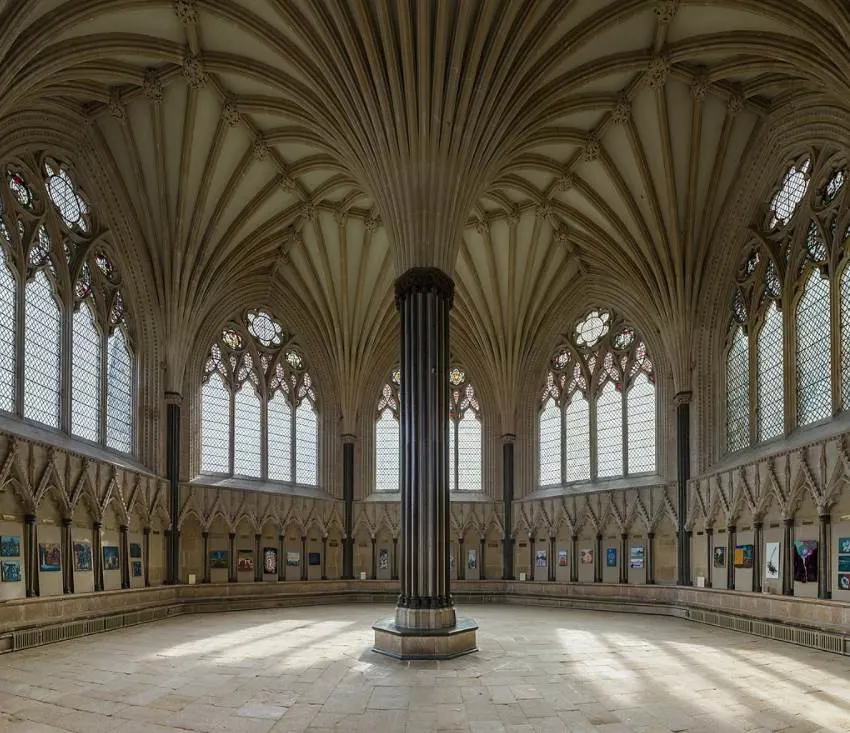
10. The bell towers of the cathedral are equipped with 10 bells, all ranging in weight from 399 kilos (880 lbs) to 2,834 kilos (6,314 lbs).
The tenor and heaviest bell is called “Harewell” and is the main reason why the bells of the Wells Cathedral can produce the heaviest ring of ten bells in the world.
11. The interior of the church is considered to be the epitome of the Early English Gothic style. Below the tower, you can find another remarkable architectural feature referred to as “Saint Andrew’s Cross Arches.”
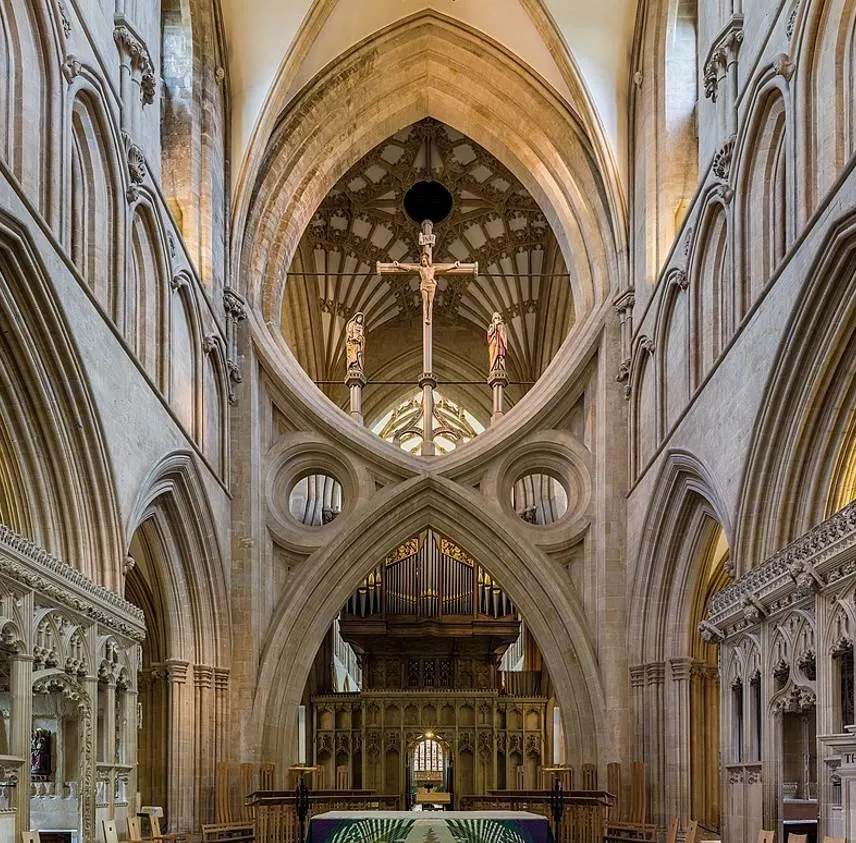
These two adjoining arches were designed in such a way that they support the piers of the crossing on 3 sides. The easternmost crossing subsequently extends into a choir screen.
12. The vault inside the choir of the cathedral features a remarkable roof. It has a fascinating pattern that might resemble that of a wooden roof.
This interesting feature emphasizes the craftmanship of the medieval architects who built this amazing structure in the small city of Wells in South West England.
